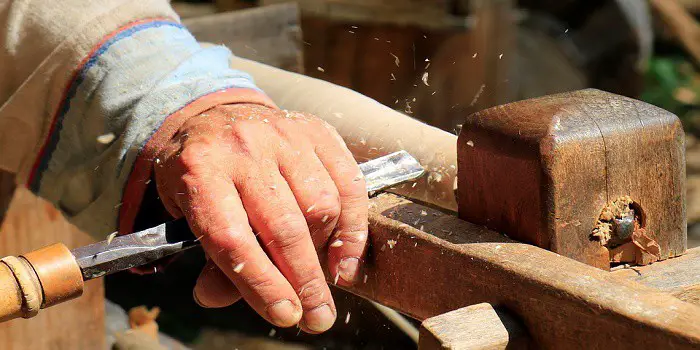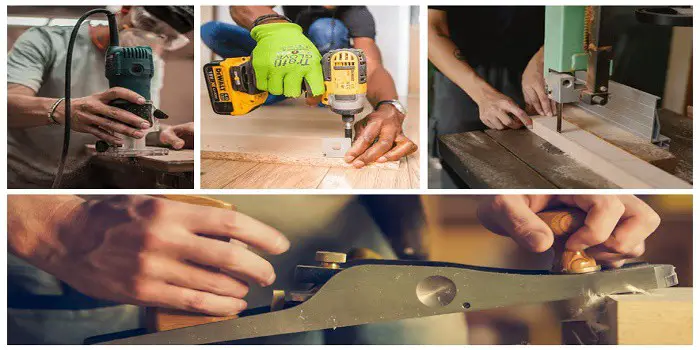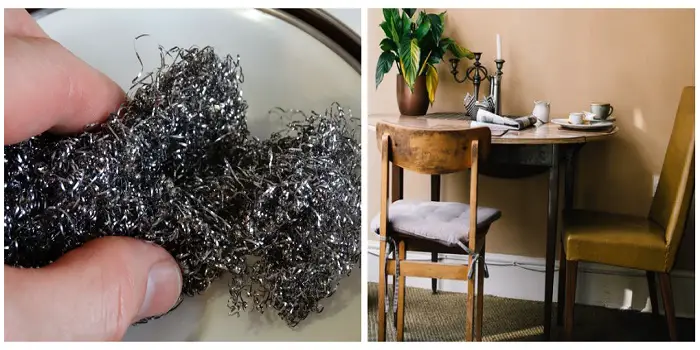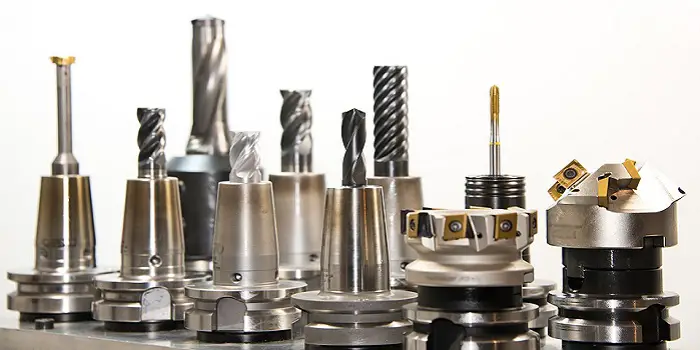
As you might guess, a wood drill bit is designed to create holes in wood.
The bits are made not to damage the wood when making the holes.
Masonry bits may be designed for brick and stone, but they can also be used for drilling rough holes into timber if needed.
It will, however, take longer, and the hole will be rougher compared to a wood bit, but it can be done.
The hole created by the masonry bit is rougher because it is designed to simply force its way through the material, unlike a wood bit designed to shave its way through the wood.
If you look at a wood bit and a masonry bit side by side, they may appear to be quite similar. And in many ways, they are since the basic design is to drill through the material.
But there are significant differences between the bits when you look closer.
Using the right bit for the job is paramount since the wrong bit may cause things to go awry.
The twist drills for metalworking can also be used to drill into wood.
In fact, softwoods can have clean holes drilled into them from bits made of carbon steel.
However, hardwoods such as oak can dull a standard steel bit rather quickly, so a cobalt or titanium-coated drill bit is recommended.
But what are the differences between wood and masonry bits? It pays to know how each type of bit does its job.
Drill Bits for Wood
These bits are crafted from high-speed or high-carbon steel.
You may see that brad point bits are known as wood drill bits, but there are other types as well, including the following.
- Auger
- Forstner
- Paddle or Spade
- Regular Twist
Brad-point bits are quite popular and can be identified by the small, pointed tip design that is made to penetrate soft timber.
If you look closely, you’ll see spurs on each side of the bit that will grab the wood and help it to carve in a downward direction.
The result is a smooth, clean hole.
Auger:
A close spiral body that sports a low helix angle, the auger bit has a screw tip at its center.
This will penetrate the wood and pull it towards the bit.
Forstner:
You can use this bit to drill large holes in wood. But they will be smooth thanks to the radial cutting edge.
Paddle or Spade:
This bit has a round shank and a flat blade.
You’ll see a spur tip at the center, which looks like a brad point. If you want to make large holes, this is the type of bit for you.
Drill Bits for Masonry
Although primarily designed to drill through masonry, these bits are also effective in punching through marble, tile, and even granite countertops.
If you need to punch through stone to hang pictures, put up shelves, or just need a hole in stone-based materials, this is the bit for you.
A masonry bit is essentially a twist bit that has cutting tips made from tungsten carbide.
You’ll find an HSS or carbon steel body that has a sloping tip covered in carbide.
The carbide keeps the blade sharp over time as it penetrates masonry.
The tip is ground at an ability that does not have a spur at the center.
The point angle is 135 degrees which makes it significantly different from a metal bit – it exists because it provides the bit with greater strength and longevity.
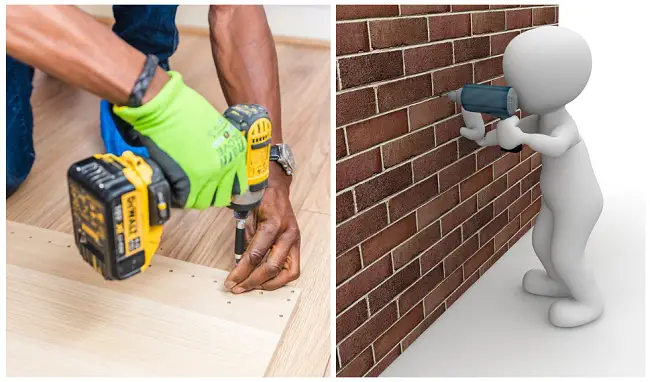
Wood vs. Masonry Drill Bits: Differences
The basic difference between a wood and masonry bit is the design which helps it penetrate the material.
Design of the drill bit:
Wood drill bits rotate and drill into the wood from the get-go.
This is actually quite different compared to a masonry bit that uses a hammering force to penetrate the material.
This is why the sloping angle of the masonry drill bit can penetrate stone to a far greater degree compared to a wood drill bit that is used on masonry or stone.
The different philosophy in drill design is apparent when you use a masonry bit on wood.
Instead of a smooth, clean hole, you will see a rougher hole instead.
However, when you try to use a wood bit on masonry, all you get is a ruined drill bit.
Because they are designed to grab the wood with the spurs and drill downward, the stone is simply too hard and does not allow for that to happen.
Material from it’s made of:
Masonry bits are considerably harder than wood bits.
Made from tungsten carbide, masonry bits are designed to hold up over time against the inherent strength of tile, stone, and concrete.
Wood bits are mostly made from carbon steel which is fine for wood but will dull quickly with masonry.
By looking at the wood and masonry bits, you can see that the wood bit has a sharp, pointed spur at the center, while the masonry bit has cutting edges that are shaped to a 135-degree angle.
And while a masonry bit will look similar to a twist bit, one big visual difference is that a masonry bit has a larger point angle compared to wood or metal bits.
The cutting tips are also made from tungsten carbide over a bit crafted from steel.
So, if you have a masonry bit and need to drill into wood, you can do so with little damage to the bit itself.
This is good for demolition work or when you just don’t care if the hole is smooth or not.
The Conclusion
If you have no wood bits available, masonry bits will do the job in a pinch.
However, if you need sharp, clean holes in wood, then avoid the masonry bit.
Conversely, if you only have wood bits and need to punch holes into masonry. Then go to the hardware store and get some masonry bits.
The bottom line, use the bits for what they are made to be used for. This will save you time, effort, and money when drilling into materials.

Hi, I am Mark Garner a professional carpenter, woodworker, and DIY painter. I live in the small city of Peoria, Arizona as a semi-retired woodworker. I have started this blog with a simple motive to help you with my wood experience in this sector. If you like to know more about what I love doing and how it all got started, you can check more about me here.


